Text
Batik Masks
How to convert old, much-cherished, Javanese and Balinese batik sarongs into something useful in this year of pandemia? Memories of favorite fabrics from the past re-purposed into well-made masks? Why not?
Dana Cooper, a Bermuda-based designer, suggested I call Pauline Lock at In Style USA in NYC's garment district. Pauline said, "Let's see what we can do...."
Most of the sarongs had a single tear where they'd received the most wear.

Plenty of material--including some from other non-Indonesian, non-batik fabric--to make enough masks for Christmas presents to extended family.
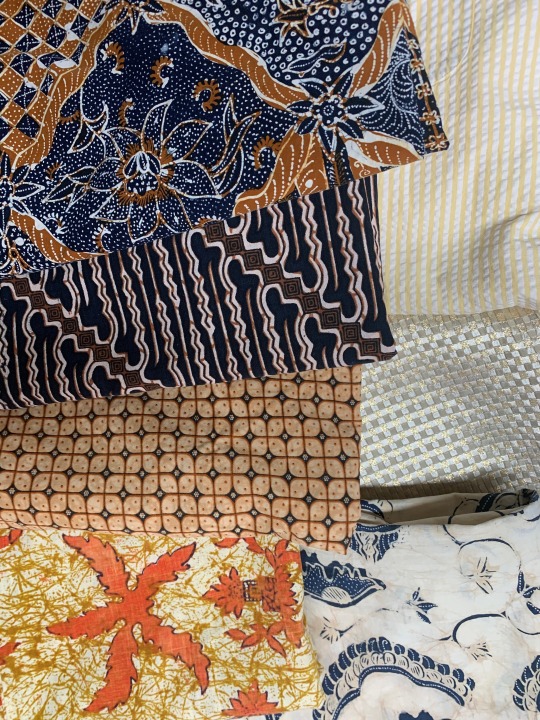
One of those old pieces was an almost 50-year-old George McGovern t-shirt that I'd embroidered while sailing from Hawai'i to Tahiti in 1971.
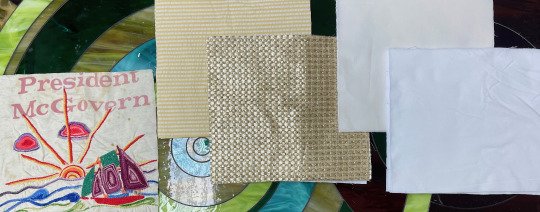
The three pieces on the left above are first layers of non-batik textile. The second piece from the right is the middle layer of DuPont Silvadur antimicrobial fabric, and the interior layer of fine soft cotton is on the right.
InDesign’s people measured and cut all the fabric and manufactured 58 masks over a couple of working days...
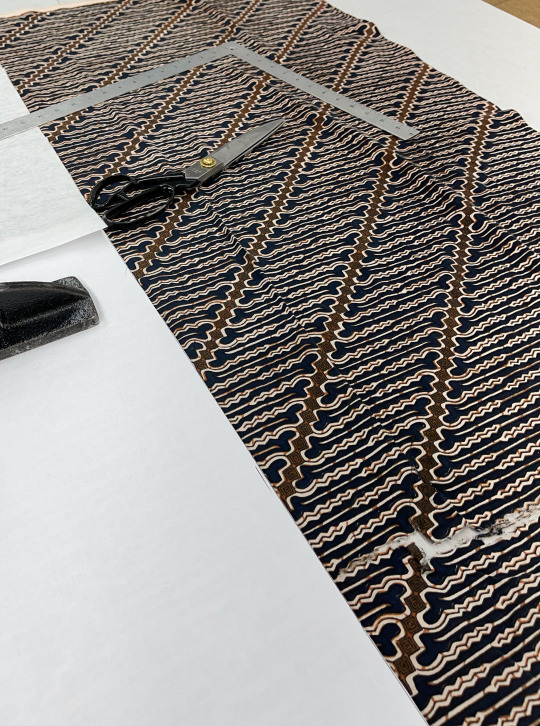
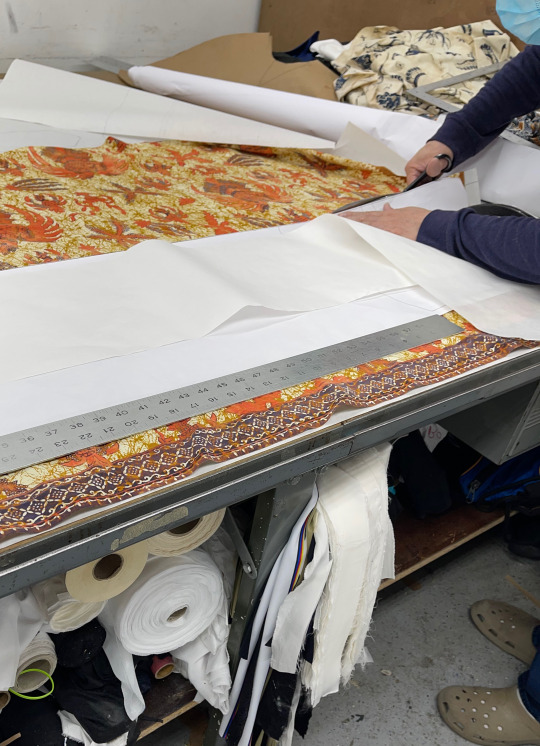
... and delivered them in time for close-to-Christmas mailing,....

and every one recalls memories from the past four decades.
6 notes
·
View notes
Text
KJRI Exhibition Opening Video
The Indonesian Consulate in NYC shot the YouTube video below on October 24, 2016 at the opening of the exhibition “The Storytelling Art of Bali.” I’d never seen it before today--October 21, 2020.
It seems like an appropriate first post in the resurrection of this blog from almost four years in Tumblr purgatory....
https://www.youtube.com/watch?v=p1lY9XVbYKQ
0 notes
Text
This blog has been ignored for way too long. The previous entry is almost four years old....
0 notes
Text
The Storytelling Art of Bali: Wayang Painting from Temples to Tourism
An exhibition opening on Monday, October 24, at the Consulate General of Indonesia in New York, will feature twenty-one 19th and 20th-century paintings and drawings that illustrate 100 years of evolution of Balinese wayang painting from precolonial times to the present.
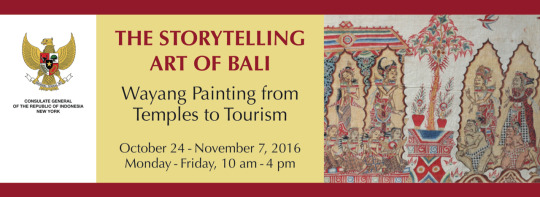
The show includes large antique paintings created for Balinese temples and royal houses telling the Hindu-Buddhist stories of Bali’s shadow theater as well as more recent work showing the evolution of this art to smaller formats created for contemporary family temples in Bali and for Indonesian and foreign collectors.

“Preparations for a Festival in the Court of Prince Panji” by Nyoman Serenkog, a woman artist from the village of Kamasan, in a 2013 museum exhibition in Bali.
The exhibition will be open Monday through Friday, from 10:00 AM to 4:00 PM, October 24 through November 7, 2016, at the Indonesian Consulate, 5 East 68th Street, New York, NY.
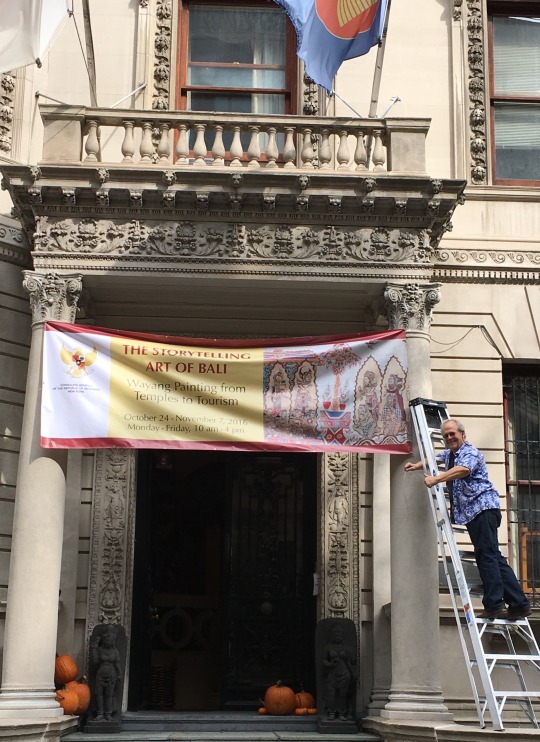
The two posts that follow just below show the other 20 paintings and drawings in the exhibition.
0 notes
Photo

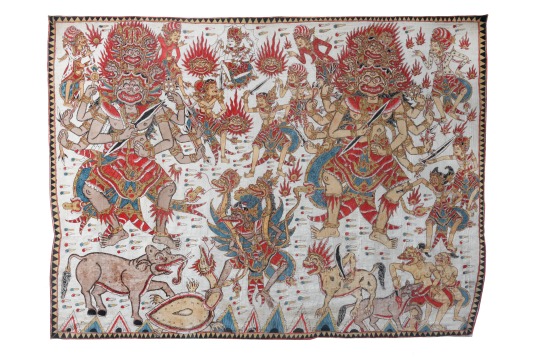


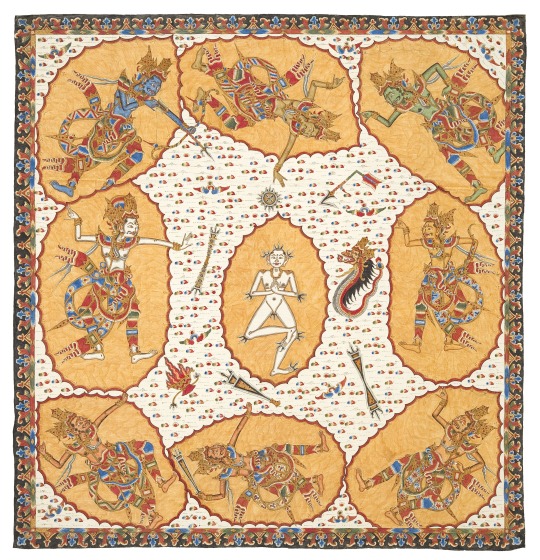




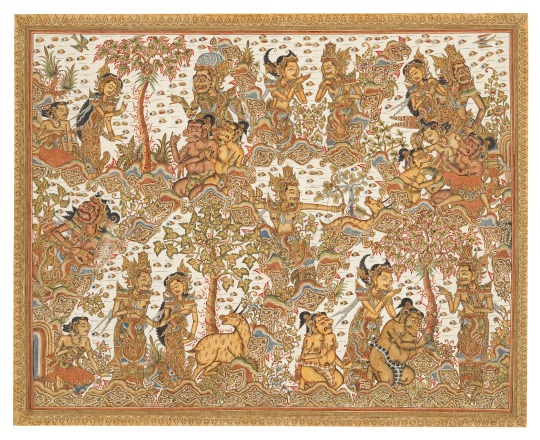
Paintings 1-10 at the “Storytelling Art of Bali” exhibition at the Consulate General of Indonesia, 5 E. 68th St. New York, NY. The exhibition is open Monday to Friday from 10 AM to 4 PM from Monday, October 24 through Monday, November 7, 2016.
2 notes
·
View notes
Photo

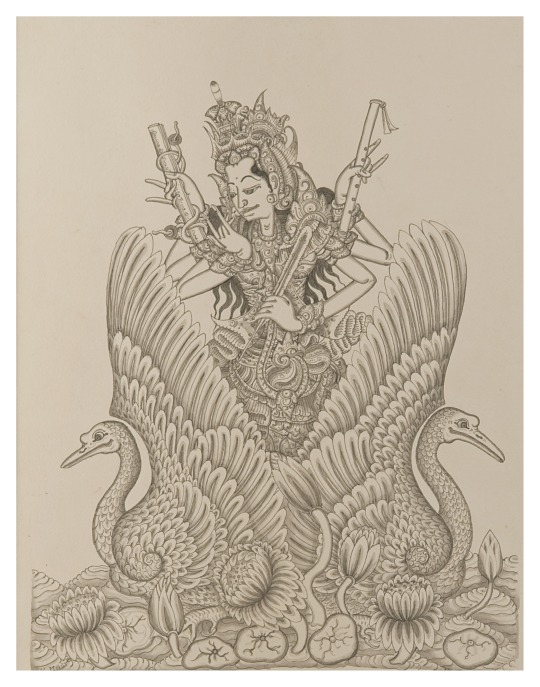


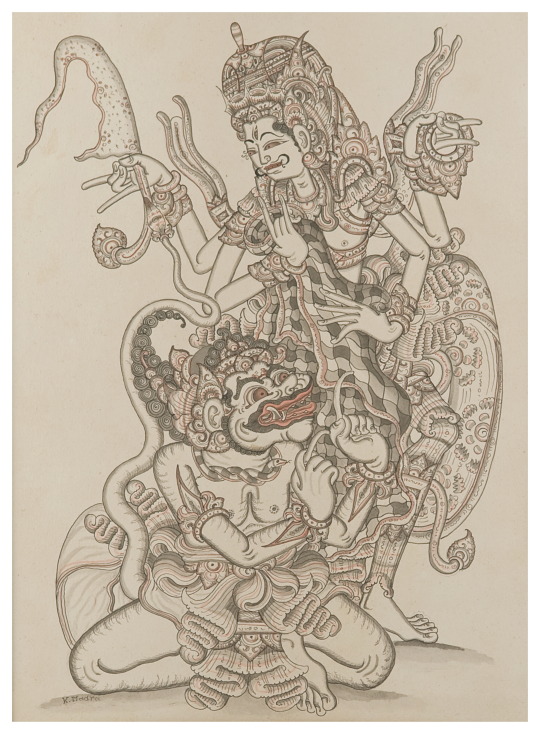

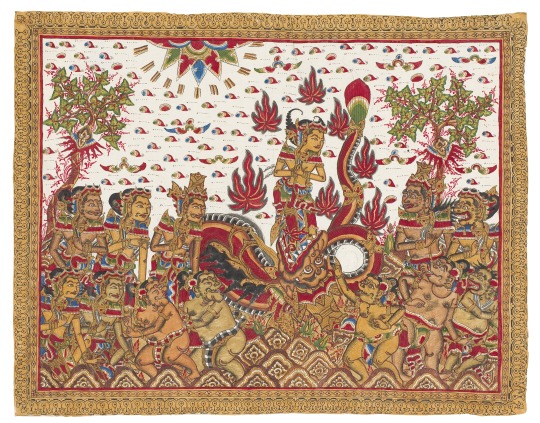
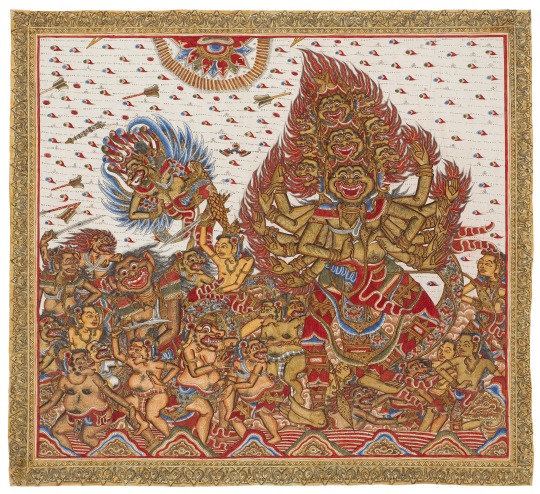


Paintings 11-20 at the “Storytelling Art of Bali” exhibition at the Consulate General of Indonesia, 5 E. 68th St. New York, NY. The exhibition is open Monday to Friday from 10 AM to 4 PM from Monday, October 24 through Monday, November 7, 2016.
0 notes
Photo

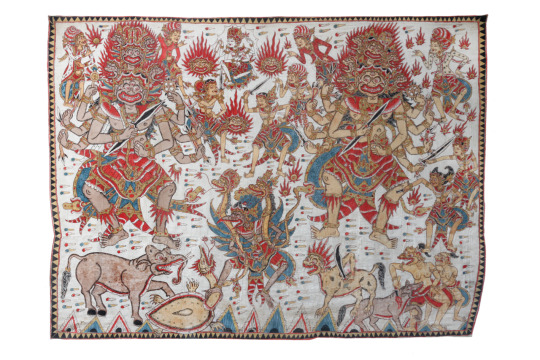
“Garuda, Wibiwasu, and Supratika,” a 19th century Balinese temple painting from Karangasem, shown here at the top as it was purchased in 1973 and last exhibited at Ubud’s Museum Puri Lukisan in 2013, and below as cleaned and completely restored in Bali in 2015. The unrestored painting appears with the story on page 44 of the exhibition catalog, Ketut Madra and 100 Years of Balinese Wayang Painting.
2 notes
·
View notes
Photo

What I loved most about the opening of "Illuminating Line: Master Drawings of I Gusti Nyoman Lempad" at Ubud's Puri Lukisan Museum last week was the sheer enthusiasm of Balinese people of all ages for the work that this timeless artist created.
Balinese Calendar (Palelintangan) commissioned from I Gusti Nyoman Lempad by Canadian composer Colin McPhee in 1937, and donated to the American Museum of Natural History, ink, cinnabar, gouache and gold leaf on bark-cloth, 257 x 160 cm.
1 note
·
View note
Text
If you're in Bali or nearby...
... do please come to the opening of "Illuminating Line: Master Drawings of I Gusti Nyoman Lempad" and the book launch of Lempad of Bali: The Illuminating Line on Saturday at 6:00 PM at the Museum Puri Lukisan, Jalan Raya, Ubud.
One hundred Lempad images, most of them not seen in Bali since before WWII, are now hanging at the museum.
We're expecting 1000 people; we plan to feed them all; and we're hoping you can make it, too.
The drawing below, "Ni Bawang Decorated by the Birds of the Forest," is from the collection of the Vienna Ethnographic Museum. A detail appears on the cover of Lempad of Bali.

0 notes
Text
Help Bring Lempad Back to Bali
I'm returning to Bali next week to help design and mount the exhibition "Illuminating Line: Master Drawings of I Gusti Nyoman Lempad" at Ubud's Museum Puri Lukisan.
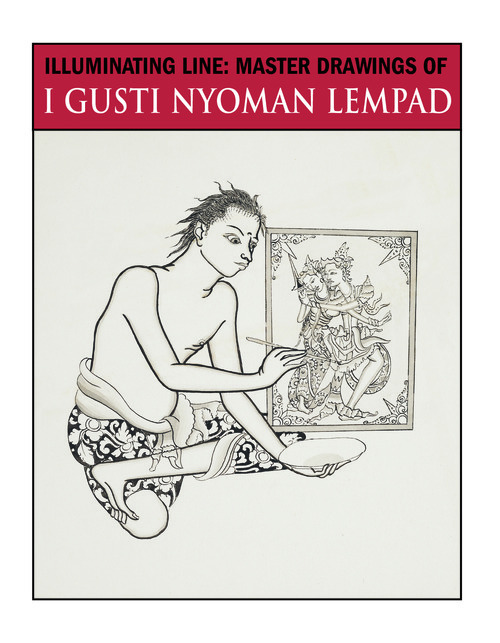
If you would like to "help bring Lempad back to Bali" there's a FundRazr campaign here where a $150 contribution will cover the cost of bringing a Balinese village painters association to the exhibition or place a catalog in an Indonesian university or art museum library.
And if you would like to buy Lempad of Bali: The Illuminating Line, the exquisite catalog of the exhibition with 500 rarely seen Lempad drawings, the Museum Puri Lukisan is offering a pre-publication special price here.
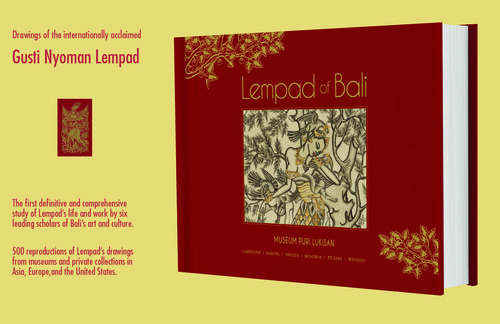
1 note
·
View note
Text
Larasati auctions painting of Kala Rahu by Ketut Madra and 1973 student
Bidding started at IDR 15 million at ARMA last Sunday for a 1973 painting of Kala Rahu.
The work, signed on the back by I Ketut Madra and on the front by his then-teen-age student Dewa Nyoman Pyadnya, shows Kala Rahu in the heavenly garden of the gods about to drink the elixir of immortality (tirta amerta). He is spotted by Ratih, goddess of the moon at upper right; she alerts Wisnu (just below), who prepares to hurl his spiked and razor-edged discus (cakra) at the intruder.

The work was selected by Larasati from about 20 pieces in the recent Museum Puri Lukisan exhibition, "Ketut Madra and 100 Years of Balinese Wayang Painting." Larasati chose the painting in part because this scene from the Kala Rahu story is rarely shown in Balinese art and in part for the clarity of the representation of all the attending deities.
Ketut Madra had four apprentices in 1973. It was the traditional way for a young person to learn to paint. The student would live at the master's house, help to prepare canvas and tools, and learn the ancient stories of the wayang kulit and the technique of capturing them on paper and canvas.
Dewa Nyoman was Madra's most talented student that year by far. For a large work on canvas such as this, his assistance, under close supervision, would include adding shading to the line and then some of the color after the fully inked drawing of each element had been completed by Madra.
There were five bids for the work and the auction hammer fell at 19 million rupiah.
I still don't know who bought the piece.
0 notes
Text
Rare Lempad Calendar Coming to Ubud's Puri Lukisan
The Balinese Painting Facebook page today revealed that the 'Lempad of Bali' exhibition opening on 20 September 2014 at Ubud's Museum Puri Lukisan will include an unusual calendar painted by Gusti Nyoman Lempad in the 1930s for Canadian composer Colin McPhee. The painting on bark cloth from Borneo (Kalimantan) is owned by the American Museum of Natural History in New York City. Two details of this large painting below shows the top two rows of seven in the calendar and then a close-up of the three panels in the top left section of the painting.

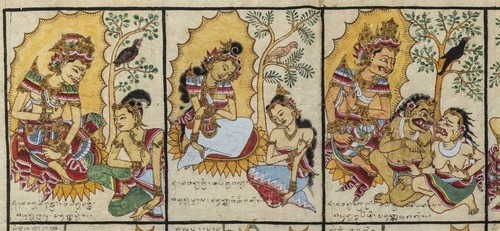
0 notes
Text
In Memoriam: Ni Wayan Konderi
I just learned from I Made Berata that Ni Wayan Konderi, wife of I Ketut Madra, died early on Friday morning, May 30.
Kind, loving, gentle, and smart, with a warm and mischievous sense of humor, Wayan was the soul, spirit, wit, and house mother of the Ketut Madra Homestay.
These photos taken at the Museum Puri Lukisan opening last October captures something of the character of this remarkable woman who had friends all over the world.



0 notes
Text
Made Berata creates gamelan angklung painting for a new CD
Peliatan artist Madé Berata created this acrylic-on-paper painting for the cover of a new CD of gamelan angklung music from Vital Records appearing later this spring.
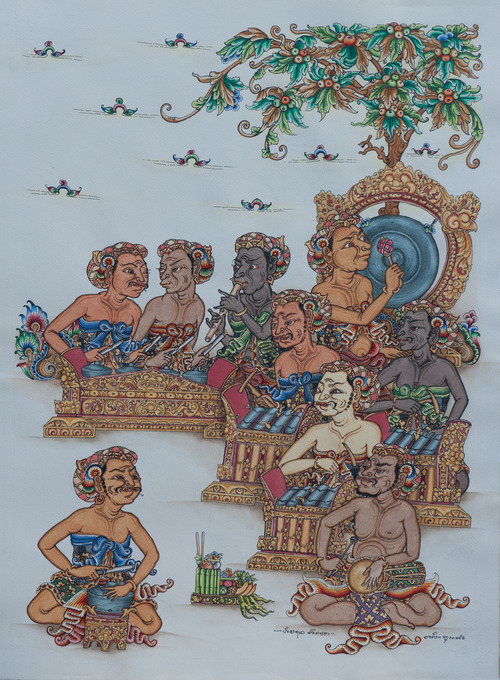
At the request of composer-teacher-writer Wayne Vitale, Pak Madé designed this modern wayang work showing angklung musicians and instruments. Its detail recalls old Balinese temple paintings of performances for royal courts and festivals, while the simplicity of the image and the humor of the wayang style caricatures bring it alive as a 21st-century CD illustration.
Vitale recorded the music in Kerobokan in 1992, his first year as director of Gamelan Sekar Jaya of Oakland, California.
Madé Berata (below) teaches wayang painting at the Institute Seni Indonesia in Denpasar. He is the son of wayang artist Ketut Madra, also of Peliatan.

photos by Anggara Mahendra
0 notes
Text
Museum Puri Lukisan Acquires Four Paintings from Madra-Wayang Exhibition
Ubud's Museum Puri Lukisan purchased four paintings from its recent exhibition Ketut Madra and 100 Years of Balinese Wayang Painting. Two works by Ketut Madra of Peliatan and two by the late Pan Semari of Kamasan join the museum's permanent collection for display with other wayang work in Gedung III.
The exhibition and its catalog included 69 Balinese wayang paintings created over the previous century -- 40 from my collection, 15 from Ketut Madra's, and the remaining 14 from seven museums and private collections in the USA and Bali.
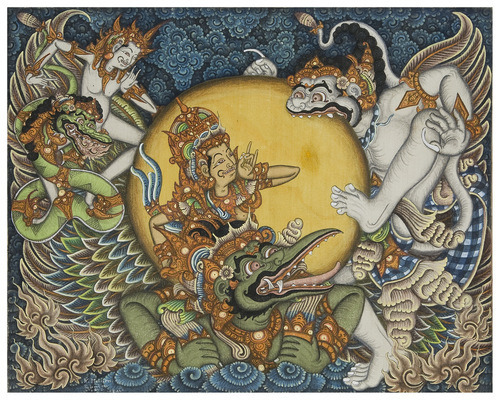
Hanoman and Surya by Ketut Madra (above, acrylic on canvas, 54.5 x 44 cm, 1972, #55 in the exhibition catalog) was the catalog cover image and was also used for one of the exhibition posters. One of the most widely reproduced paintings by Madra, it also appears in the September 2013 Departures magazine article Wayang: How to Paint a Legend.

Ketut Madra's Dharmaswami (above, acrylic on canvas, 60 x 50.5 cm, 2013, #68 in the exhibition catalog) is a recent work completed just before the exhibition. It tells the same Tantri legend as the 1935 work by Ida Bagus Gelgel of Kamasan (below) - one of the best known and most highly regarded paintings in the Museum Puri Lukisan. Madra created the work especially for the exhibition to honor the Gelgel painting.

The other two paintings acquired by the museum are the work of Kamasan artist Pan Semari (1922-2000). Both depict Ramayana scenes in natural pigments with gold leaf on hardboard and include the appropriate verses in Balinese script. I bought the paintings from the artist in 1973.
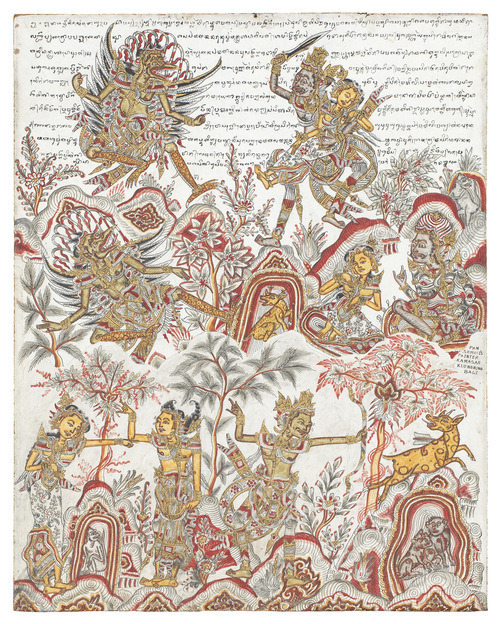
Abduction of Sita, Pan Semari, 58 x 70 cm, 1973, exhibition catalog #29
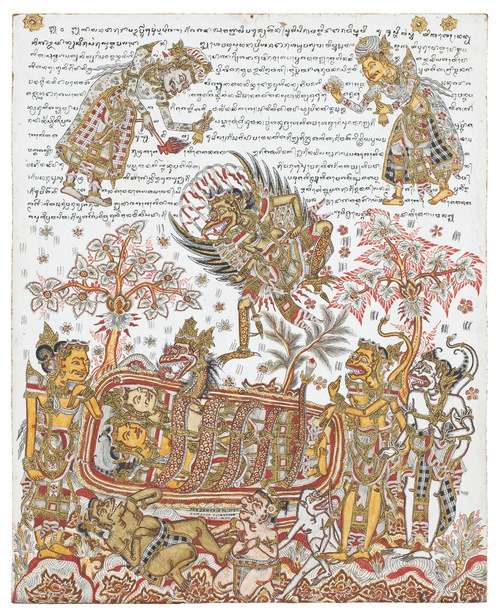
Rama and Laksmana Released by Garuda from Meganada's Nagapasa, Pan Semari, 58 x 70 cm, 1973, exhibition catalog #39
#Ketut Madra#Wayang painting#Museum Puri Lukisan#Hanuman#Hanoman#Dharmaswami#Pan Semari#Kamasan painting#Ramayana#Tantri
2 notes
·
View notes
Text
Ketut Madra at the Exhibition Opening
Perhaps my greatest pleasure at the opening of Ketut Madra and 100 Years of Balinese Wayang Painting on October 7 was seeing the joy the event gave this modest 73-year-old artist.

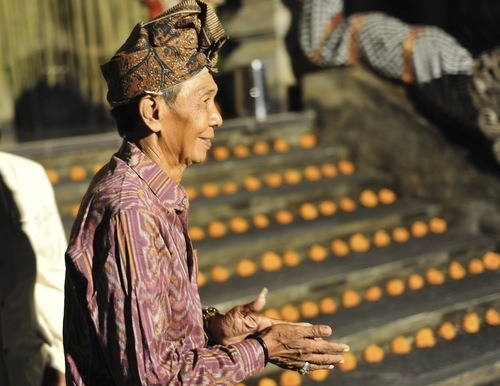
Most of the guests at the opening were Balinese and about half of them were fellow artists who wanted to have their picture taken with Madra.

And Puri Lukisan curator Agung Muning (below right) finally realized the wish of his old friend Rudolf Bonnet to have Madra's work in the museum's permanent collection.
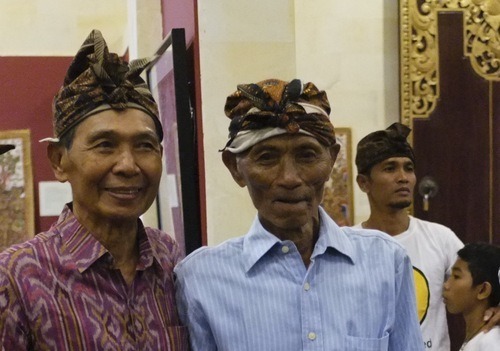
Ketut also reconnected with old friends: Rucina Ballinger (left) and Rio Helmi (right) who've known him for almost 40 years introduce him to Catriona Mitchell.

Madra and Ketut Sudarsa with one of their favorite paintings from the Tebesaya Gallery....

Verra Mulianingsih and Luh Windiari, who translated the exhibition catalog into Indonesian, on Ketut's right and left, with Julie Boak and Ketut's wife Wayan Konderi on the right...

And Ketut and me as the show began.

0 notes
Text
How to hang a Kamasan painting
The village of Kamasan, south of Klungkung in Bali, has been known for centuries as a source of traditional Balinese paintings based on the great Hindu epics the Ramayana and the Mahabharata.
The artists of Banjars Sangging and Siku in Kamasan originally painted for the temples, palaces, and homes of wealthy patrons in Gelgel and Klungkung and nearby regions. While wayang paintings are still created in most regions of Bali, the best work from Kamasan has become known as representing the continuation of the classical tradition of Balinese temple painting.

Kamasan work almost always includes a painted border which makes framing somewhat superfluous. Because Kamasan paintings on cloth often hang in Balinese temples and homes in ways that allow them to move with air currents, museum curators and conservators try to catch that feeling in their best practice of presenting these paintings.
The small Kamasan Ramayana painting above from the recent Museum Puri Lukisan exhibition in Ubud hangs freely on the museum wall. Painted by Made Swacita in 1973, the work depicts the Abduction of Sita in four scenes moving clockwise from the lower right to the upper right. The painting, #28 in the exhibition catalog, measures 87.5 x 58.5 cm.
The technique museum curators use to hang this kind of work is quite simple, and can be easily used for hanging these paintings at home. The photo below shows the rice-paper hinges on the back of the work above.
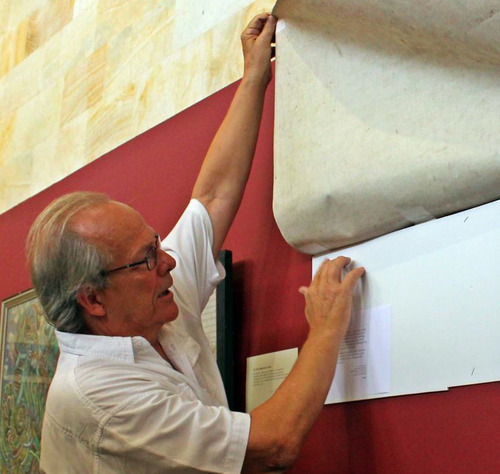
The hinges are attached first to the painting with rice-based glue, acquired in fine powder form and mixed with water to produce a paste of about the same consistency as "Elmer's Glue" for wood products. When the glue is dry the other half of the hinge is attached to the backing.
Because Kamasan works are almost always painted on cotton cloth sized with rice paste and then polished, the ingredients in the hinge and glue are chemically identical to the cloth to which they are attached.
The backing for any long-term display can be either acid-free white cardboard, which is usually used in climate-controlled conditions in the USA and Europe, or polymeric corrugated board. In tropical conditions, the polymeric board is preferred as some insects find the cardboard delicious. This is what we used (above) at the Puri Lukisan exhibition, following advice of conservators at the National Archives of Singapore.
The bottom edge of any backing behind the painting can be several centimeters shorter than the top edge so it less visible to the viewer. The backing may be attached directly to the wall with stainless steel staples or small stainless nails.
This mounting procedure allows the paintings to "breathe" and to move in air currents and best replicates their appearance in a Balinese environment.
1 note
·
View note